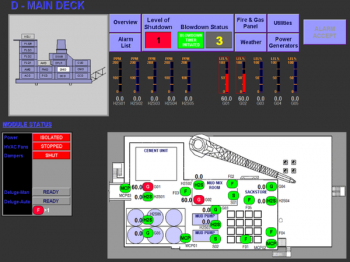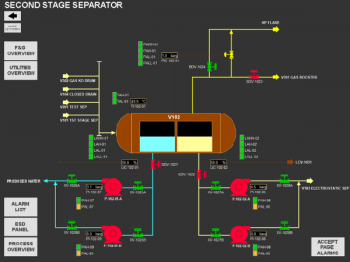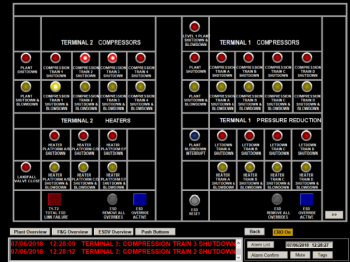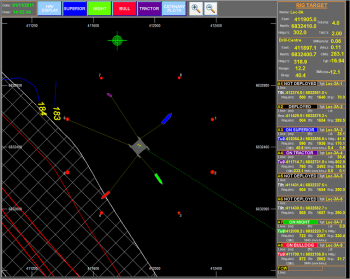I'm going to be honest, and you're not going to like it, but this thread seems to be an echo chamber for complaining about things you don't like rather than making legitimate points. There are these massive posts filled with words which don't really say anything, but keep using buzzwordy terms. Honestly, this thread reads like a one-man
buzzword generator. Some of these are real terms that are being misused. There is a lot of misconceptions and poor understanding of many modern concepts. The list of things you hate seems to be - buttons that don't look like buttons. Links that don't look like links. Responsive design. White space. Scrolling. Landing pages.
By these criteria,
Yahoo.com Circa 2001 is the ultimate in web design. The search button is a button. The links are obviously links. It doesn't scroll. It doesn't respond and re-order itself on a small device. It doesn't use much white space between sections.
Firstly, I'd not use the term "UIx" in these type of conversations. UI and UX are 2 different things, usually done by 2 different teams that work together. Ironically, companies who produce bad "UIx" are usually the companies who mash these 2 separate things into 1. To muddy things further, UIX is actually a specific technology by Oracle, used for creating web applications. If you google it, the top result is a UI and UX designer, and UIX is his brand. So let's be clear - UI and UX are 2 different things, and you need both to create a good product.
There also appears to be some misunderstanding on responsive design from earlier in the thread. Responsive design is when one page can generate a layout for a variety of screen sizes, without the need to reload the page. So you have 1 HTML page, 1 CSS file, 1 JS file (or rather, only require them, there are complex sites which share these across pages obviously). From those files, the page refactors itself to suit the correct screen - usually using
@media queries in the CSS file. This is not purely for mobile, as it is used to adjust sites between HD and 4K monitors too. The example you used of the 12 inch iPad Pro isn't a great example. If you have a site that's displaying a small iPhone layout on an iPad Pro, then that isn't bad UI UX design, that's bad development. The resolution of an iPad Pro is large enough that it's on par (and sometimes exceeds) small laptops (not Apple ones, mind you). This site probably has the breakpoints for the
@media queries set incorrectly. Bad development is not the same as bad design.
With that out of the way, let's look at "mobile-first" development. Another term that was used earlier in this thread, incorrectly. Mobile-first is when you're developing a responsive website, but start with the mobile version and then scale it up once that's complete. It actually has no bearing on the final result, it just dictates your workflow and how easy it is to code the website. Instead of using @media(max-width) in your CSS, you're using @media(min-width). The reason for that is it's easier (from a development point of view) to scale up the site, rather than try and scale down. Rearranging divs, grids, and flexboxes to fit smaller screens is a nightmare. Rearranging them up the way is easier. So "mobile-first" isn't about the experience at the end - it's how the developer goes about building it.
The reason mobile layouts are so important is they make up the majority of hits. Mobile browsing overtook desktop browsing in 2016 and has stretched its legs since then. In 2018 almost 60% of page views were from a mobile browser. So if you're a developer, and you're looking to prioritise development, are you going to develop for the 60% or the 40%? Obviously, there are exceptions to this - Mozilla MDN are hosting developer network information, and that's probably going to be more of a desktop thing as developers are on desktops (when I say desktops, I include laptops, obviously). However, for the vast majority of the sites, the point stands - most of the world moved to mobile devices 3 years ago. This is especially true for developing countries, where cheaper Android phones making up the majority of the mobile market.
When you merge these 2 things (mobile development and mobile browsing), you also get into talk over overheads and unrequired code. If you can have 1 site achieve the same thing, why are you building two? You're doubling your workload, but you're also increasing bandwidth costs and increasing loading times. Slow loading times due to complex and messy code is directly related to mobile bounce rates. With smart browsers (which we all have if we aren't on IE!) then the browser knows the screen resolution before it begins and will only download the required content, thus reducing bandwidth and loading times. Obviously, if the developer builds it wrong then that goes out the window, but that's back to bad development, not UX and UI. And then we can start talking about CPU and GPU useage, which is tied directly to power consumption, which for mobiles is a big thing, etc etc.
My own site is closer to 55% 45%, and that surprised me. I thought my site would be more desktop-based as it serves video streams and a detailed live timing system for endurance racing. It is a very niche site and can be quite complex. But even my site was getting 55% mobile hits. So that's not up for debate at this point - mobiles are the priority because they make up more of the hits, and the gap is growing.
As for complexity of sites, you've asked an odd question:
How important is increasing complexities at sites/apps if it's not of value to prioritize available screen space when one abandons their iPhone or iPad and picks up their MB to get some real productivity work accomplished?
Websites don't exist to be websites. They exist to sell products, services, or information. UX designers prioritise reducing the bounce rate, increasing interaction, etc. There are studies into this, and some amazing tools such as Google Analytics which will tell you exactly how users are interacting with your site. That is the priority for UX designers, not "prioritising available screen space on a MB" because that person thinks they're doing some
real work.
The oddest one in this thread was parallax scrolling. Saying Parallax Scrolling is change for the sake of change because Jony Ive didn't like 3D Buttons is like saying my neighbor crashed her Ford Focus into a lamppost because I went on holiday and bought a baseball cap. There is absolutely no relationship between these 2 items.
Moving forward, I would highly advise some UI and UX courses. Udemy sales would have them down to about $15. That way you'll get the correct terms used in the correct context.
Sorry if this post comes across as harsh, it isn't meant to be. But this thread can be summed up with:
















